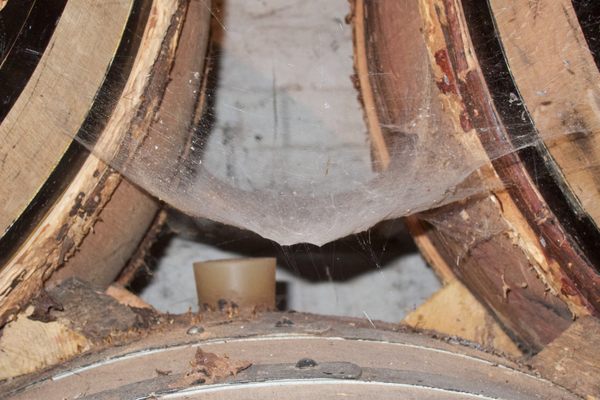Mad Madame LaLaurie, New Orleans’ Socialite Serial Killer

New Orleans’ history is filled with belles and beauties, but few as immortal as Madame LaLaurie. A three times married Louisiana socialite, LaLaurie (born Delphine Macarty) acquired her name that would be legendary from her final marriage to the physician Dr. Leonard Louis Nicolas LaLaurie. In 1831 the couple bought property at 1140 Royal Street under Delphine’s name, and less than a year later she had transformed the lot into a three-story mansion with attached quarters for their slaves. Decorating with decadence, gold plates and the paintings of noted artists adorned the walls, and the New Orleans Bee described the home’s furnishings as “of the most costly description.” A central figure in the New Orleans social elite, LaLaurie was known for her frequent cocktail parties, private balls, and lavish galas. Celebrated for being gracious, captivating, and wildly beautiful, she was one of the best-known women in New Orleans society in her time.
So hospitable was Madame LaLaurie that her guests looked past what was observed to be the “singularly haggard and wretched” state of her slaves. Indeed, some observed her beating her own daughters when they attempted to feed the famished servants. Although polite to her slaves when in public, even emancipating two (Jean Louis in 1819 and Devince in 1832), public rumors circulated regarding her cruelty and extreme treatment. A local lawyer was dispatched to 1140 Royal Street to investigate the situation, but he found no evidence of mistreatment.
Then came an incident of undeniable ruthlessness. Lia, a twelve-year-old slave, was brushing Delphine’s hair when she hit a snag. Infuriated, Delphine chased the child throughout the house with a whip, up through the galleries and onto the roof, where, with her angry mistress hot on her heels, the girl ran off the edge, falling to her death. LaLaurie dumped her body in the well.
Witnesses reported the incident and another investigation of the household was undertaken, this one ending with a conviction of illegal cruelty and the mandatory forfeiting of nine slaves. By having family and friends buy back her slaves and then resell them to her, Delphine managed to reacquire them all. Yet the true nature of the LaLaurie household would soon be revealed.
Driven to suicide by LaLaurie’s abuse, the 70-year-old cook (who was emaciated, despite being chained to the stove) set fire to the mansion on April 10, 1834. As the flames spread, a crowd gathered to assist LaLaurie and her guests escape the blaze. As LaLaurie rushed about salvaging her coats and jewels and possessions from the fire, the crowd began to wonder, why weren’t her servants helping her? LaLaurie shrugged these questions off. As smoke consumed the upper levels, moans and screaming became audible from the street, and a group of over a dozen men formed to help the slaves, who’d clearly been locked away. Delphine staunchly refused to give the men the keys, and so they found their way through the burning home to the attic door, kicking it in to free the trapped servants. There is no way they could have anticipated what lay behind the door.
The room smelled potently of death, and many vomited upon entering. Yet even more horrible than the dead slaves chained to the walls were those still alive — albeit barely. Maimed by medical experiments, some were still strapped to tables, some were huddled in small cages. One man had been turned into a woman, one woman had been turned into a human crab, her limbs broken and reset into bizarre angles. One woman’s arms had been amputated, her skin peeled into a spiral pattern. Pails of body parts, organs, and severed heads were scattered throughout the room; many of the dead’s faces grotesquely disfigured.
As word spread of the newly discovered horrors, those who had been helping began forming a lynch mob, calling for LaLaurie’s death. Before anyone else thought to act, LaLaurie hopped into her carriage and escaped the scene, never to be seen in New Orleans again.
Those of the slaves not yet deceased were put on public view at the local jail, where a reported 4,000 people came to “convince themselves of their sufferings.” A subsequent investigation discovered multiple bodies buried throughout the mansion’s grounds.
The rest of Madame LaLaurie’s life is not well-documented. It is thought she spent the rest of her days in France, yet an epitaph plate declaring her death was found in New Orleans in 1873.
Today, the house is still standing. It is considered the most haunted building in all of New Orleans.









Follow us on Twitter to get the latest on the world's hidden wonders.
Like us on Facebook to get the latest on the world's hidden wonders.
Follow us on Twitter Like us on Facebook